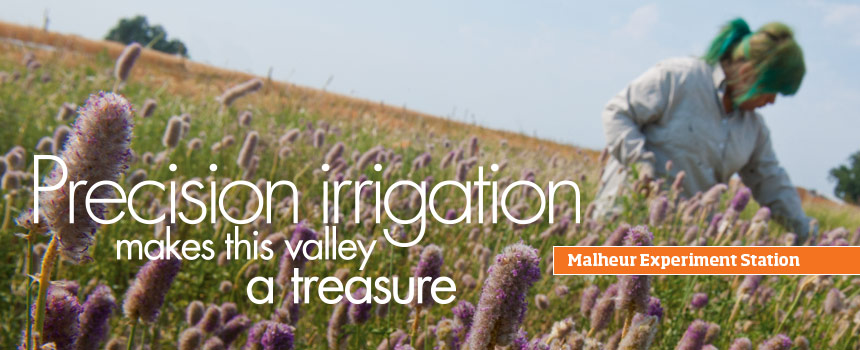Quenching the thirst

Watch your step around the crops at the Malheur station, where wires crawl through fields like tentacles. The wires measure a field’s soil-water tension—the natural force needed for plants to pull water from the soil—and they lead to a small utility box that displays what equates to a measure of dirt thirst. When the sensors detect high soil-water tension, it means that the soil is thirsty and the system prompts the release of just the right amount of irrigation dripped onto the plant roots to quench the thirst.
[caption caption="Clint Shock (right) explains how solenoid valves wired to data loggers and soil moisture sensors control precision irrigation treatments. (Photo by Lynn Ketchum.)"] [/caption]
[/caption]
“Soil-water tension is an absolutely indispensable part of irrigation. Too much water or too little water means you’re not going to optimize production,” says Clint Shock, researcher and Station superintendent.
Precision irrigation is an important area of research for Malheur scientists, and essential to this region that receives only 9 inches of rain a year. No local farmers used drip irrigation when OSU began researching precision irrigation systems in the early 1990s. Since then, more than half of Malheur County growers have installed drip in their fields, says Shock. OSU researchers have also developed specific equations for calibrating the sensors, work that has enabled manufacturers to successfully market precision irrigation instruments worldwide.
